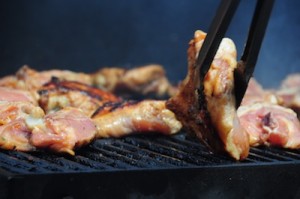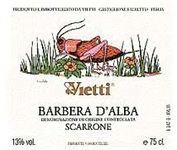The recession has been good to Argentine wine. Starting in 2008, when consumers put the brakes on buying wines over $40 a bottle, many turned in droves to Argentine wines, Malbec especially, to satisfy their cravings. In 2009, Argentine imports were up 34.1% in volume, and the double-digit trend continued throughout 2010, 2011, and by all accounts 2012.
However, there is always another side to the coin. Because a gold-rush mentality became attached to Argentine wine, large companies moved in to plant vineyards as fast as they could. If they could get the new vineyards into production fast enough, there was big money to be made.
The problem? Young vine Malbec that is overcropped in the vineyard doesn’t taste very good.
Before 2008, most Malbec coming into America was between $10-15 on the retail shelf and came from older vines that kept yields down naturally. These are the Malbecs that got the initial public attention: big, robust, black and red fruit dominated wines that had structure that many $20 American wines lacked. But starting in 2009, super-affordable Malbec started creeping into stores … even as cheap as $5.99 a bottle.
Many of these super cheap wines tasted green, stemmy, and out of balance. Harvesting Malbec at high yields from young vineyards leads to these bell pepper aromas.
With the recession in full force, many wine drinkers didn’t worry too much about the quality of these Malbecs. But as we enter 2013 statistics show people are not only spending more per bottle but are more concerned about the quality of the wine (along with the environmental stance of the winery). That brings us to one of our superstar producers, Ernesto Catena, producer of Padrillos.
Ernesto Catena is a fourth generation winemaker, a true visionary, and a bit of a hippie. Wanting to give consumers a good alternative to the green/stemmy “nouveau Malbec” hitting the market, Ernesto established an organic vineyard (soon to be certified Biodynamic) in the high elevation region of the Uco Valley. It is here that both Malbec and Torrontes develop full and rich flavors, solid structure, and fine detail without even a hint of bell pepper. The most affordable wines in the line up are the “Padrillos” wines, which means “Stallion” in the local dialect.
We were visited by Matias Fraga of Ernesto Catena Wines last summer … check out our short videos of Matias talking about these great wines.
These affordable wines are readily available in the state of Minnesota. Here is a list of where to find them (locations are listed alphabetically by city, be sure to call ahead to confirm availability).
Padrillos Malbec
The BeaneryAitkin
218-927-7811
Cash Wise Liquor - Alexandria
Alexandria
320-762-2524
Cash Wise Liquor - Baxter
Baxter
218-829-9286
Tutto Bene
Bemidji
218-751-1100
Mgm - West Bloomington
Bloomington
952-888-9421
Cash Wise Liquor - Brainerd
Brainerd
218-828-9003
Seven Sisters Spirits
Detroit Lakes
218-847-2337
Mt Royal Bottle Shoppe
Duluth
218-728-6168
Cash Wise Liquor - Duluth
Duluth
218-722-4507
Midi Restaurant
Duluth
218-727-4880
Lake Aire Bottle Shoppe
Duluth
218-724-8818
Coconut Thai
Edina
952-288-2888
The Hilltop
Edina
952-925-5628
Mgm - Forest Lake
Forest Lake
651-464-5790
Jerry's Warehouse Liquors
Grand Rapids
218-326-1229
On The Rocks Wine & Spirits
Hugo
651-787-9480
Zellas
Hutchinson
320-587-9463
Liquor Hutch
Hutchinson
320-587-2762
Sunfish Cellars
Lilydale
651-552-5955
61 Liquors
Maplewood
651-484-9447
The Wine Market
Mendota Heights
651-452-9463
Milaca Municipal Liquor
Milaca
320-983-6255
Monello/constantine
Minneapolis
612-353-6207
Whole Foods - Mpls
Minneapolis
612-313-7100
Ken And Norm's Liquors
Minneapolis
612-822-0030
Studio 2 Cafe
Minneapolis
612-315-4243
Cave Vin
Minneapolis
612-922-0100
Kafe' 421
Minneapolis
612-623-4900
Jasmine 26
Minneapolis
612-870-3800
Kings Wine Bar
Minneapolis
612-354-7928
Surdyk's
Minneapolis
612-379-3232
Cash Wise Liquor - Moorhead
Moorhead
218-236-8081
Cash Wise Liquor - New Ulm
New Ulm
507-354-2720
Cash Wise Liquor - Owatonna
Owatonna
507-451-8440
Tower Glen Liquor
Roseville
651-639-0122
Cork & Cask
Saint Cloud
320-253-6573
Cash Wise Liquor - St Michael
Saint Michael
763-497-0659
Rite Liquor Store
Saint Paul
651-414-0346
Cafe Minnesota
Saint Paul
651-259-3030
Liquor Village
Saint Paul
651-699-7070
The Commodore
Saint Paul
651-330-5999
Bj Thorkelson
Saint Paul
Cafe Latte
Saint Paul
651-224-5687
Toasted Wine+spirits+ales
Saint Paul
651-246-8054
Scott's Liquor
Saint Paul
651-690-4434
Nicole Ralston
Saint Paul
651-487-1212
Horizon Warehouse Liquor
Solway
218-467-3245
Do Not Use - Owners International W
St Paul
651-690-5471
The Wine Thief
St Paul
651-698-9463
Phil's Tara Hideaway
Stillwater
651-439-9850
Do Not Use, Owner - Bluefin Bay Resort
Tofte
218-663-7860
Liquor Lodge
Turtle River
218-586-3472
Do Not Use Owner, Mgm - Vadnais Heights
Vadnais Heights
651-653-3456
Cash Wise Liquor - Waite Park
Waite Park
320-259-1156
Cash Wise Liquor - Willmar
Willmar
320-235-8797
Hy-vee - Winona
Winona
507-452-5411
***
Padrillos Torrontes








